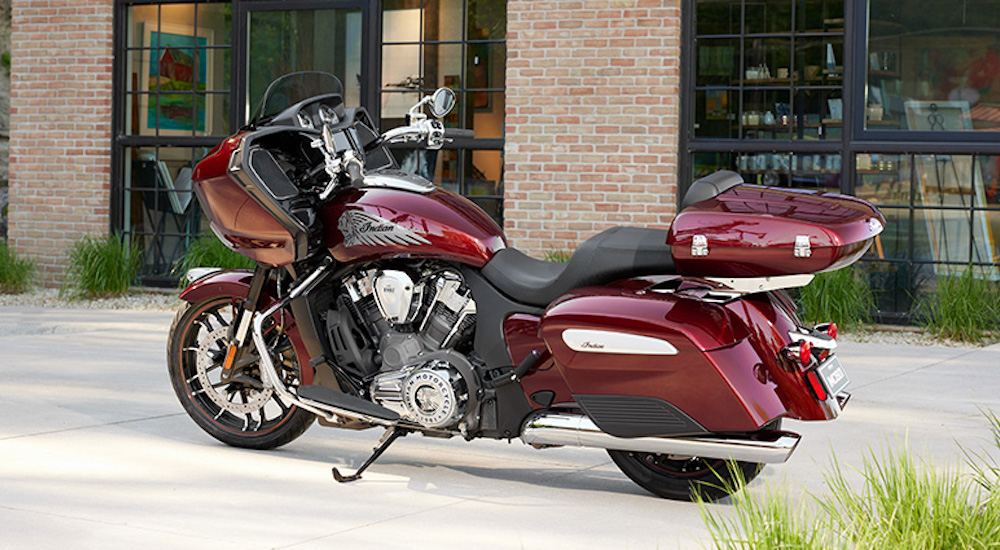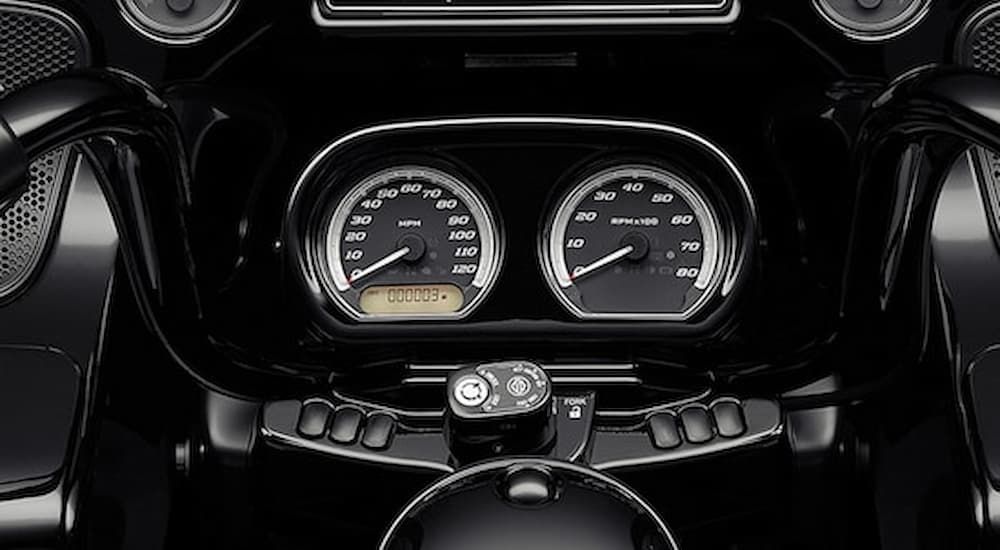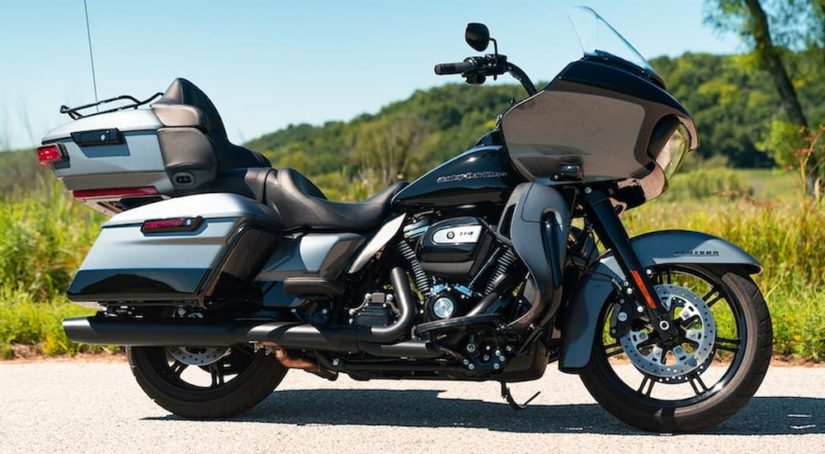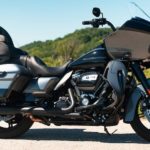There’s an ongoing rivalry between Harley-Davidson and Indian, two of the oldest motorcycle manufacturers in America. The rivalry has defined the motorcycle industry for decades, igniting passionate debates among loyal riders that avow one brand is better than the other. Their reasons are solid, and their arguments are valid.
Today, these heated debates and industry-defining rivalry continue as many riders weigh their options to find the best bike to handle their adventure needs. They’re looking for a bike that can accommodate their in-town rides just as readily as their weekend excursions beyond state lines. This often comes down to finding a Harley-Davidson Road Glide for sale and comparing it to its Indian rival, the Challenger.
For 2023, the competition is fierce between the respected motorcycle brands. The 2023 Road Glide and 2023 Challenger are remarkable powerhouses, but as with any worthwhile motorcycle race, it doesn’t end in a tie. There’s an apparent leader, and it’s easy to see when you dive deeper into the specs and discover why and how Harley-Davidson has cornered the market for years with its Grand American Touring lineup.
Style and Specs
The 2023 Harley-Davidson Road Glide and 2023 Indian Challenger are touring bikes with exceptional reputations. As expected, their specs are somewhat comparable, with Harley-Davidson and Indian distinguishing the respective models with signature design elements and details. For example, the Road Glide and Challenger have sleek designs, but Harley-Davidson offers the Road Glide in three colors (Vivid Black, Redline Red, and Atlas Silver Metallic) with classic chrome accents. Alternatively, the Challenger is only available in two colors, Black Metallic or Titanium Smoke, that Indian pairs with more blacked-out elements than chrome.
The Road Glide and Challenger rely on frame-mounted or sharknose fairings which house LED lighting that heightens your visibility in the saddle. However, the Road Glide is slightly more accommodating to riders because of its more accessible seat, which sits at 25.9 inches, compared to the Challenger’s 26.5-inch laden seat height. The Road Glide is also shorter, measuring 95.7 inches long (98.5 inches on the Challenger), but weighs slightly more at 855 pounds in running order than the 831-pound Indian. Even then, Harley-Davidson ensures your control and stability with the lower center of gravity and seat height.

Performance
As touring bikes, the 2023 Road Glide and 2023 Challenger are two-wheeled powerhouses ready for every adventure, whether in town or venturing beyond the city limits. Indian outfits the 2023 Challenger with a PowerPlus liquid-cooled V-Twin, but competing with the king of the V-Twin baggers is impossible. The Road Glide draws its power from a Milwaukee-Eight 107 V-Twin that has exceptional low-end torque for incredible responsiveness and agility at any speed. Moreover, the Milwaukee-Eight delivers the classic rumble expected of a Harley-Davidson road warrior, courtesy of a dual exhaust with tapered mufflers.
While speed is critical, stopping power is equally important. Fortunately, the Road Glide and Challenger take a similar approach, with Harley-Davidson and Indian outfitting the bikes with dual floating rotors at the front and a single, fixed rotor at the rear. To ensure you get the most out of every ride, the Road Glide and Challenger have six-gallon fuel tanks, but the Road Glide does a better job of conservatively sipping fuel. Its combined fuel economy of 43 MPG, compared to 41 for the Challenger, means you can go the distance, with Harley-Davidson giving you more time in the saddle and less time at the pump. It’s a worthwhile combination that gives the Road Glide another edge over the competition.
Handling and Comfort
The 2023 Road Glide differentiates itself in the Grand American Touring lineup by its frame-mounted or sharknose fairing, a design feature it shares with the 2023 Challenger. The frame-mounted fairing is advantageous because it reduces head buffetting by creating a wind-protected pocket for the rider. Moreover, because the fairing is mounted to the frame, it transfers wind resistance to the chassis instead of the handlebars, a feature that increases fatigue on bikes with batwing fairings.
Since the Road Glide and Challenger rely on frame-mounted fairings, you can expect the bikes to handle similarly. Both bikes have upright riding positions, with the 2023 Road Glide more accessible because of its lower seat height. The Road Glide also includes floorboards to mitigate rider fatigue and a passenger seat with an adjustable rear suspension comparable to the Challenger. The bikes feature comparable-sized saddlebags, offering over 17 gallons of storage space and minor aesthetic differences.

Technology
Technology significantly impacts the race between the 2023 Road Glide and the 2023 Challenger, with Harley-Davidson taking a notable lead because of its inclusion of innovative technologies to enhance the rider experience. While both bikes have infotainment systems and digital displays, the 2023 Road Glide infotainment system is more intuitive and better equipped. For example, the 2023 Challenger’s display includes an AM/FM radio, weather band radio, and Bluetooth compatibility. Alternatively, the Harley-Davidson Boom! Box 4.3 infotainment system is easier to pair with your smartphone, and includes perks like SiriusXM presets.
Harley-Davidson widens the lead with its Rider Safety Enhancements, a suite of available tools designed to enhance your experience in the saddle and how the Road Glide performs. The 2023 Challenger’s performance-related technology is limited to the Selectable Ride Modes and antilock brakes, leaving the 2023 Road Glide to bask in the spotlight. The Rider Safety Enhancements on the 2023 Road Glide are optional and include essential components like antilock brakes, electronically linked brakes, vehicle hold control, and a tire pressure monitoring system.
While these Rider Safety Enhancements are impressive and integral to your experience in the saddle, Harley-Davidson refuses to stop there. The manufacturer’s cornering-specific technologies instill more confidence and heighten your control when doing what you love most–exploring every stretch of the road, from the straightaways to the twisties. The tools working behind the scenes include a Cornering Enhanced Anti-Lock Brake System, a Cornering Enhanced Electronic Linked Braking, a Cornering Enhanced Traction Control System, and a Cornering Drag-Torque Slip Control System. You won’t find any comparable tools in the Indian lineup.
And the Winner Is…
Harley-Davidson and Indian have pioneered the motorcycle industry in America since the beginning of the 20th century, defying the odds by surviving the Great Depression, overcoming numerous other setbacks, and celebrating countless successes. The rivalry between the brands is as natural as breathing. It’s inherent in America’s motorcycle landscape because the brands are renowned for building iconic powerhouses that offer thrilling performance and exceptional value. Harley-Davidson and Indian are both worthy investments, but the race between these brands rarely ends in a tie.
Harley-Davidson has an undeniable advantage when comparing the 2023 Road Glide and the 2023 Challenger. As a Grand American Touring bike, the 2023 Road Glide is agile and responsive, with its well-known V-Twin producing the signature rumble everyone loves. There’s also the matter of value and customization, with the 2023 Challenger falling short in both arenas. The 2023 Road Glide starts at $21,999 and offers more bang for your buck compared to the $24,999 Indian Challenger in 2023. Moreover, the Road Glide is easily customizable, serving as a blank canvas that can bring your touring dreams to life. It’s an advantage you can’t overlook, and one that guarantees the 2023 Road Glide finishes first in every race.



